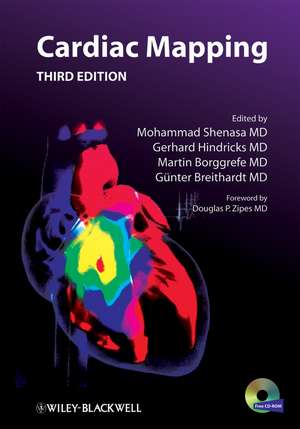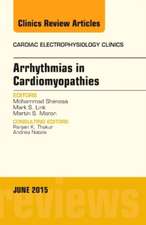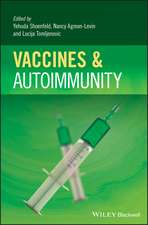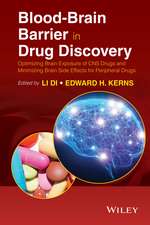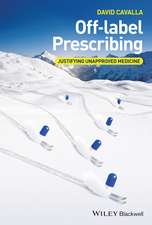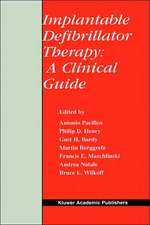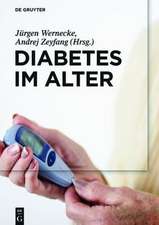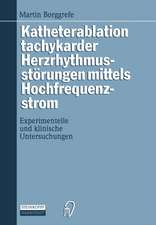Cardiac Mapping
Editat de Mohammad Shenasa, Gerhard Hindricks, Martin Borggrefe, Gunter Breithardten Limba Engleză Hardback – 4 dec 2008
Preț: 1481.97 lei
Preț vechi: 1559.96 lei
-5% Nou
Puncte Express: 2223
Preț estimativ în valută:
283.66€ • 308.23$ • 238.43£
283.66€ • 308.23$ • 238.43£
Carte disponibilă
Livrare economică 29 martie-12 aprilie
Preluare comenzi: 021 569.72.76
Specificații
ISBN-13: 9781405175722
ISBN-10: 1405175729
Pagini: 544
Dimensiuni: 188 x 263 x 34 mm
Greutate: 1.46 kg
Ediția:3rd Edition
Colecția Wiley–Blackwell
Locul publicării:Chichester, United Kingdom
ISBN-10: 1405175729
Pagini: 544
Dimensiuni: 188 x 263 x 34 mm
Greutate: 1.46 kg
Ediția:3rd Edition
Colecția Wiley–Blackwell
Locul publicării:Chichester, United Kingdom
Public țintă
EP Fellows, EP–Physicians, particularly those performing transcatheter ablation of cardiac arrhythmiasDescriere
Since the publication of the second edition of Cardiac Mapping, substantial achievements and breakthroughs have been made in the field of interventional electrophysiology and imaging technologies. Today mapping technology is no longer an investigational research tool, rather an essential part of the clinical electrophysiology laboratory. Mapping of complex arrhythmias such as atrial and ventricular fibrillation is emerging as a new era in the management of these arrhythmias.
This thoroughly updated third edition focuses on new developments in the field such as mapping of complex arrhythmias, navigation systems, and image integration, with information on the strengths and limitations of each mapping technology. New to this edition is the inclusion of a DVD illustrating real time data from actual cases. Cardiac Mapping remains an integral part of the science and practice of complex rhythm management, and a central resource for the interventional electrophysiologist, rhythmologist and all those interested in understanding the mechanisms of cardiac arrhythmias.
This thoroughly updated third edition focuses on new developments in the field such as mapping of complex arrhythmias, navigation systems, and image integration, with information on the strengths and limitations of each mapping technology. New to this edition is the inclusion of a DVD illustrating real time data from actual cases. Cardiac Mapping remains an integral part of the science and practice of complex rhythm management, and a central resource for the interventional electrophysiologist, rhythmologist and all those interested in understanding the mechanisms of cardiac arrhythmias.
Textul de pe ultima copertă
Since the publication of the second edition of Cardiac Mapping, substantial achievements and breakthroughs have been made in the field of interventional electrophysiology and imaging technologies. Today mapping technology is no longer an investigational research tool, rather an essential part of the clinical electrophysiology laboratory. Mapping of complex arrhythmias such as atrial and ventricular fibrillation is emerging as a new era in the management of these arrhythmias.
This thoroughly updated third edition focuses on new developments in the field such as mapping of complex arrhythmias, navigation systems, and image integration, with information on the strengths and limitations of each mapping technology. New to this edition is the inclusion of a DVD illustrating real time data from actual cases. Cardiac Mapping remains an integral part of the science and practice of complex rhythm management, and a central resource for the interventional electrophysiologist, rhythmologist and all those interested in understanding the mechanisms of cardiac arrhythmias.
This thoroughly updated third edition focuses on new developments in the field such as mapping of complex arrhythmias, navigation systems, and image integration, with information on the strengths and limitations of each mapping technology. New to this edition is the inclusion of a DVD illustrating real time data from actual cases. Cardiac Mapping remains an integral part of the science and practice of complex rhythm management, and a central resource for the interventional electrophysiologist, rhythmologist and all those interested in understanding the mechanisms of cardiac arrhythmias.
Cuprins
Dedication. Acknowledgments.
Contributors.
Preface to the First Edition.
Preface to the Second Edition.
Preface to the Third Edition.
Foreword.
Part I Historical Perspectives.
1. Cardiac Activation Mapping: The Amsterdam Years: Hein J. Wellens.
Part II. Methodological and Technical Considerations.
2. Construction and Interpretation of Maps: Lars Eckardt and Günter Breithardt.
3. Cardiac Anatomy for Interventional Electrophysiology and Mapping: Siew Yen Ho, José Angel Cabrera, Damian Sánchez–Quintana.
4. Principles of Noncontact Endocardial Cardiac Mapping: Kim Rajappan and Richard J. Schilling.
5. Principles of Nonfluoroscopic Electroanatomical and Electromechanical Cardiac Mapping: Yitzhack Schwartz and Shlomo A. Ben–Haim.
6. Principles of NavX Mapping: Christopher Piorkowski and Gerhard Hindricks.
7. Magnetic Navigation: Catheter Ablation: Sabine Ernst.
8. CT Angiography Cardiac Anatomy for Mapping and Ablation of Arrhythmias: Jerold S. Shinbane, Daniel Goodwin, Leslie A. Saxon and Matthew J. Budoff.
9. MRI Anatomy for Cardiac Mapping and Ablation: Aravindan Kolandaivelu, Henry R. Halperin and Albert C. Lardo.
10. Challenges and Limitations of Electroanatomical Mapping Technologies: Jeff M. Hsing, Paul Zei, Henry H. Hsia, Paul J. Wang and Amin Al–Ahmad.
.
Part III. Mapping in Experimental Models of Cardiac Arrhythmias.
11. Mapping of Atrial Neural Stimulation and Inhibition in Atrial Fibrillation – Pierre Pagé and Reneé Cardinal.
12. Mapping of Neurally Based Atrial Arrhythmias: Guo–Dong Niu, Benjamin J. Scherlag, Zhibing Lu, Jeffery Edwards, Eugene Patterson, Muhammad Ghias, Annerie Moers, Shu Zang, Ralph Lazzara, Warren M. Jackman and Sunny S. Po.
13. Electrophysiological Mapping of the Right and Left Ventricle in Experimental Animals: Jacques MT de Bakker, Jérôme GM Jungschleger and Marc A. Vos.
Part IV. Mapping of Supraventricular Tachyarrhythmias.
14. Endocardial Catheter Mapping in Patients with Wolff–Parkinson–White Syndrome and Variants of Preexcitation: Nikolaos Dagres and Hans Kottkamp.
15. Transcatheter Cryomapping in AV Nodal Reentrant Tachycardias: Mohammad R. Jazayeri.
16. Mapping and Ablation of AV NRT and its Subtypes: Stephan Willems, Daniel Steven, Boris Lutomsky, Imke Drewitz, Helge Servatius, Thomas Meinertz and Thomas Rostock.
17. New Observations on Mapping and Ablation of Atrial Flutter: Navinder S. Sawhney and Gregory K. Feld.
18. Mapping of Macroreentrant Right and Left Atrial Tachycardias: Mohammad Shenasa, Hossein Shenasa, Christopher Piorkowski and Gerhard Hindricks.
19. Mapping of Focal Atrial Tachycardias: Nitish Badhwar, Byron K. Lee and Jeffery E. Olgin.
20. Interpretation of Atrial Electrograms During Atrial Fibrillation: Sébastien Knecht, Rajesh Subbiah, Mélèze Hocini, Pierre Jaïs, Kang–Teng Lim, Seiichiro Matsuo, Leonardo Arantes, Mark D. O′Neill, Nicolas Derval, Frederic Sacher, Antoine Deplange, Pierre Bordachar, Jacques Clémenty and Michel Haïssaguerre.
21. Different Mapping Approaches for Atrial Fibrillation Ablation: KR Julian Chan, Feifan Ouyand and Karl–Heinze Kuck.
22. Integration of other Imaging Technologies into the Mapping of Atrial Fibrillation: Tamer s. Fahmy, J. David Burkhardt and Andrea Natale.
.
Part V. Mapping of Ventricular Tachyarrhythmias.
23. Substrate Mapping for Ablation of Ventricular Tachycardia in Coronary Artery Disease: John V. Wylie Jr., Timothy W. Smith and Mark E. Josephson.
24. Mapping of Unstable Ventricular Tachycardia: Usha B. Tedrow and William Stevenson.
25. Endocardial and Epicardial Mapping of Nonischemic Right and Left Ventricular Nonischemic Cardiomyopathy: Matthew D. Hutchinson and Francis E. Marchlinski.
26. Role of Mapping in Arrhythmogenic Right Ventricular Cardiomyopathy: Molly Sachdev and Hugh Calkins.
27. Mapping of Idiopathic Ventricular Tachycardias: RV and LV Outflow and Septal Tachycardias: Mohammad Ali Sadr–Ameli, Majid Haghjoo and Zahra Emkanjoo.
28. Role of Different Stimulation Techniques (Pace Mapping, Entrainment Mapping) in Different Subset of Ventricular Tachycardias: Frank Bogun and Fred Morady.
29. Endocardial Catheter Pace Mapping of Ventricular Tachycardias: Mithilesh K. Das, John C. Lopshire, Deepak Bhakta, Anil V. Yadav and John M. Miller.
30. Electrical and Anatomical Mapping of Different Pathologies: Ischemic, Dilated, and Hypertrophic Cardiomyopathies: Arash Arya, Hans Kottkamp, Christopher Piorkowski and Gerhard Hindricks.
31. Mapping and Ablation of Tachyarrhythmias in Patients with Congential Heart Disease: Edward P. Walsh.
32. Transthoracic Epicardial Mapping and Ablation of Ventricular Tachycardia: André d′Avila, Mauricio Scanavacca and Eduardo Sosa.
Part VI. New Frontiers.
33. Mapping of Ventricular Tachycardia and Fibrillation: Role of the Purkinje System: Paul B. Tabereaux, Derek J. Dodsall and Raymond E. Ideker.
34. Mapping Rotors in Animals and Humans during Atrial Fibrillation: Omer Berenfield and Jérôme Khalifa.
35. Role of Mapping in Channelopathies: Brugada Syndrome, Long–QT Syndrome and Idiopathic VF: Sergio Richter and Pedro Brugada.
36. Molecular Cardiovascular Imaging with SPECT and PET: Micahel Schäfers, Günter Breithardt and Otmar Schober.
37. Optical Mapping: Its Impact on Understanding Arrhythmia Mechanisms: Guy Salama and Bum–Rak Choi.
38. The Kinetics of Intracellular Calcium and Arrhythmogenesis in Ischemia/Reperfusion: A Calcium–Centric Mechanism of Arrhythmia: Nabil El–Sharif, Gil Bub and Vikram Lakireddy.
39. Role of Body Surface Mapping: Christian Vahlhaus, Günter Breidthardt and Lars Eckhardt.
40. Electrocardiographic Imaging of Heart Failure Patients with Left Bundle Branch Block: Effects of Right Ventricular Pacing and Cardiac Resynchronization Therapy: Niraj Varma, Ping Jia and Yorum Rudy.
41. How to Better Map and Future Directions in Cardiac Mapping: Mohammad Shenasa, Jafar Shenasa and Javad Rahmian.
Index.
DVD
Contributors.
Preface to the First Edition.
Preface to the Second Edition.
Preface to the Third Edition.
Foreword.
Part I Historical Perspectives.
1. Cardiac Activation Mapping: The Amsterdam Years: Hein J. Wellens.
Part II. Methodological and Technical Considerations.
2. Construction and Interpretation of Maps: Lars Eckardt and Günter Breithardt.
3. Cardiac Anatomy for Interventional Electrophysiology and Mapping: Siew Yen Ho, José Angel Cabrera, Damian Sánchez–Quintana.
4. Principles of Noncontact Endocardial Cardiac Mapping: Kim Rajappan and Richard J. Schilling.
5. Principles of Nonfluoroscopic Electroanatomical and Electromechanical Cardiac Mapping: Yitzhack Schwartz and Shlomo A. Ben–Haim.
6. Principles of NavX Mapping: Christopher Piorkowski and Gerhard Hindricks.
7. Magnetic Navigation: Catheter Ablation: Sabine Ernst.
8. CT Angiography Cardiac Anatomy for Mapping and Ablation of Arrhythmias: Jerold S. Shinbane, Daniel Goodwin, Leslie A. Saxon and Matthew J. Budoff.
9. MRI Anatomy for Cardiac Mapping and Ablation: Aravindan Kolandaivelu, Henry R. Halperin and Albert C. Lardo.
10. Challenges and Limitations of Electroanatomical Mapping Technologies: Jeff M. Hsing, Paul Zei, Henry H. Hsia, Paul J. Wang and Amin Al–Ahmad.
.
Part III. Mapping in Experimental Models of Cardiac Arrhythmias.
11. Mapping of Atrial Neural Stimulation and Inhibition in Atrial Fibrillation – Pierre Pagé and Reneé Cardinal.
12. Mapping of Neurally Based Atrial Arrhythmias: Guo–Dong Niu, Benjamin J. Scherlag, Zhibing Lu, Jeffery Edwards, Eugene Patterson, Muhammad Ghias, Annerie Moers, Shu Zang, Ralph Lazzara, Warren M. Jackman and Sunny S. Po.
13. Electrophysiological Mapping of the Right and Left Ventricle in Experimental Animals: Jacques MT de Bakker, Jérôme GM Jungschleger and Marc A. Vos.
Part IV. Mapping of Supraventricular Tachyarrhythmias.
14. Endocardial Catheter Mapping in Patients with Wolff–Parkinson–White Syndrome and Variants of Preexcitation: Nikolaos Dagres and Hans Kottkamp.
15. Transcatheter Cryomapping in AV Nodal Reentrant Tachycardias: Mohammad R. Jazayeri.
16. Mapping and Ablation of AV NRT and its Subtypes: Stephan Willems, Daniel Steven, Boris Lutomsky, Imke Drewitz, Helge Servatius, Thomas Meinertz and Thomas Rostock.
17. New Observations on Mapping and Ablation of Atrial Flutter: Navinder S. Sawhney and Gregory K. Feld.
18. Mapping of Macroreentrant Right and Left Atrial Tachycardias: Mohammad Shenasa, Hossein Shenasa, Christopher Piorkowski and Gerhard Hindricks.
19. Mapping of Focal Atrial Tachycardias: Nitish Badhwar, Byron K. Lee and Jeffery E. Olgin.
20. Interpretation of Atrial Electrograms During Atrial Fibrillation: Sébastien Knecht, Rajesh Subbiah, Mélèze Hocini, Pierre Jaïs, Kang–Teng Lim, Seiichiro Matsuo, Leonardo Arantes, Mark D. O′Neill, Nicolas Derval, Frederic Sacher, Antoine Deplange, Pierre Bordachar, Jacques Clémenty and Michel Haïssaguerre.
21. Different Mapping Approaches for Atrial Fibrillation Ablation: KR Julian Chan, Feifan Ouyand and Karl–Heinze Kuck.
22. Integration of other Imaging Technologies into the Mapping of Atrial Fibrillation: Tamer s. Fahmy, J. David Burkhardt and Andrea Natale.
.
Part V. Mapping of Ventricular Tachyarrhythmias.
23. Substrate Mapping for Ablation of Ventricular Tachycardia in Coronary Artery Disease: John V. Wylie Jr., Timothy W. Smith and Mark E. Josephson.
24. Mapping of Unstable Ventricular Tachycardia: Usha B. Tedrow and William Stevenson.
25. Endocardial and Epicardial Mapping of Nonischemic Right and Left Ventricular Nonischemic Cardiomyopathy: Matthew D. Hutchinson and Francis E. Marchlinski.
26. Role of Mapping in Arrhythmogenic Right Ventricular Cardiomyopathy: Molly Sachdev and Hugh Calkins.
27. Mapping of Idiopathic Ventricular Tachycardias: RV and LV Outflow and Septal Tachycardias: Mohammad Ali Sadr–Ameli, Majid Haghjoo and Zahra Emkanjoo.
28. Role of Different Stimulation Techniques (Pace Mapping, Entrainment Mapping) in Different Subset of Ventricular Tachycardias: Frank Bogun and Fred Morady.
29. Endocardial Catheter Pace Mapping of Ventricular Tachycardias: Mithilesh K. Das, John C. Lopshire, Deepak Bhakta, Anil V. Yadav and John M. Miller.
30. Electrical and Anatomical Mapping of Different Pathologies: Ischemic, Dilated, and Hypertrophic Cardiomyopathies: Arash Arya, Hans Kottkamp, Christopher Piorkowski and Gerhard Hindricks.
31. Mapping and Ablation of Tachyarrhythmias in Patients with Congential Heart Disease: Edward P. Walsh.
32. Transthoracic Epicardial Mapping and Ablation of Ventricular Tachycardia: André d′Avila, Mauricio Scanavacca and Eduardo Sosa.
Part VI. New Frontiers.
33. Mapping of Ventricular Tachycardia and Fibrillation: Role of the Purkinje System: Paul B. Tabereaux, Derek J. Dodsall and Raymond E. Ideker.
34. Mapping Rotors in Animals and Humans during Atrial Fibrillation: Omer Berenfield and Jérôme Khalifa.
35. Role of Mapping in Channelopathies: Brugada Syndrome, Long–QT Syndrome and Idiopathic VF: Sergio Richter and Pedro Brugada.
36. Molecular Cardiovascular Imaging with SPECT and PET: Micahel Schäfers, Günter Breithardt and Otmar Schober.
37. Optical Mapping: Its Impact on Understanding Arrhythmia Mechanisms: Guy Salama and Bum–Rak Choi.
38. The Kinetics of Intracellular Calcium and Arrhythmogenesis in Ischemia/Reperfusion: A Calcium–Centric Mechanism of Arrhythmia: Nabil El–Sharif, Gil Bub and Vikram Lakireddy.
39. Role of Body Surface Mapping: Christian Vahlhaus, Günter Breidthardt and Lars Eckhardt.
40. Electrocardiographic Imaging of Heart Failure Patients with Left Bundle Branch Block: Effects of Right Ventricular Pacing and Cardiac Resynchronization Therapy: Niraj Varma, Ping Jia and Yorum Rudy.
41. How to Better Map and Future Directions in Cardiac Mapping: Mohammad Shenasa, Jafar Shenasa and Javad Rahmian.
Index.
DVD
Recenzii
"Although it is often said that electrophysiology textbooks are several years behind the current literature, this book has an up to date′ feel about it and will be a relevant text for years to come. Senior cardiac physiologists working in electrophysiology would also find this book extremely valuable. Although £125 may seem expensive to many I think the book offers value for money. I shall certainly be keen to purchase one or two for the electrophysiology library at our institution." (Cardiology News, February 2010)
"This text provides a comprehensive, in–depth insight into current electrophysiological mapping techniques and is written by eminent specialists in the field.... Very well written and has clear explanations along with excellent illustrations." (British Journal of Cardiac Nursing, April 2009)
"This text provides a comprehensive, in–depth insight into current electrophysiological mapping techniques and is written by eminent specialists in the field.... Very well written and has clear explanations along with excellent illustrations." (British Journal of Cardiac Nursing, April 2009)
Notă biografică
EDITED BY: Mohammad Shenasa, MD
Attending Physician
Department of Cardiovascular Services
O Connor Hospital
San Jose, CA, USA
Gerhard Hindricks, MD
Professor of Medicine (Cardiology)
Department of Electrophysiology
Director, University Leipzig – Heart Center
Leipzig, Germany
Martin Borggrefe, MD
Professor of Medicine (Cardiology)
1st Department of Medicine – Cardiology
University Hospital of Mannheim
Mannheim, Germany
Günter Breithardt, MD
Professor of Medicine (Cardiology)
Head, Department of Cardiology and Angiology
Hospital of the University of Münster
Münster, Germany
FOREWORD BY:
Douglas P. Zipes, MD
Distinguished Professor
Krannert Institute of Cardiology
Indiana University School of Medicine
Indianapolis, IN, USA; and
Editor–in–Chief, Heart Rhythm Journal
Attending Physician
Department of Cardiovascular Services
O Connor Hospital
San Jose, CA, USA
Gerhard Hindricks, MD
Professor of Medicine (Cardiology)
Department of Electrophysiology
Director, University Leipzig – Heart Center
Leipzig, Germany
Martin Borggrefe, MD
Professor of Medicine (Cardiology)
1st Department of Medicine – Cardiology
University Hospital of Mannheim
Mannheim, Germany
Günter Breithardt, MD
Professor of Medicine (Cardiology)
Head, Department of Cardiology and Angiology
Hospital of the University of Münster
Münster, Germany
FOREWORD BY:
Douglas P. Zipes, MD
Distinguished Professor
Krannert Institute of Cardiology
Indiana University School of Medicine
Indianapolis, IN, USA; and
Editor–in–Chief, Heart Rhythm Journal
